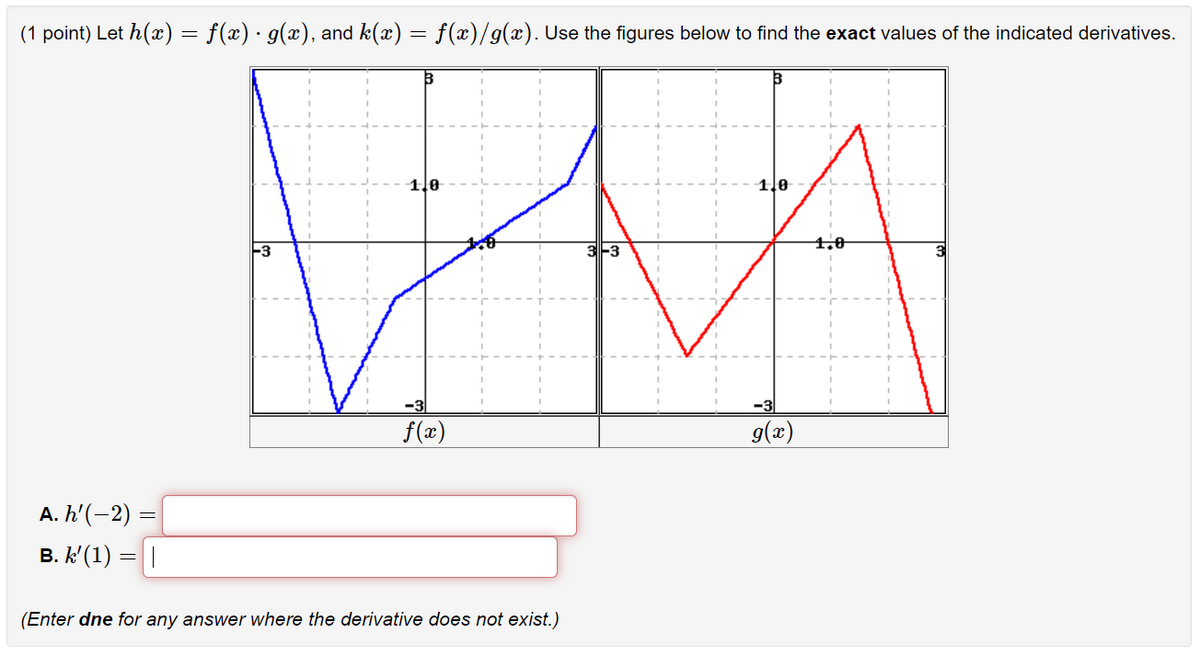(1 point) Let h(x) = f(x) · g(x), and k(x) = f(x)/g(x). Use the figures below to find the exact values of the indicated derivatives. 1.0 4,0 f(x) g(x) А. h'(-2) — B. k' (1) =|| (Enter dne for any answer where the derivative does not exist.)
(1 point) Let h(x) = f(x) · g(x), and k(x) = f(x)/g(x). Use the figures below to find the exact values of the indicated derivatives. 1.0 4,0 f(x) g(x) А. h'(-2) — B. k' (1) =|| (Enter dne for any answer where the derivative does not exist.)
Functions and Change: A Modeling Approach to College Algebra (MindTap Course List)
6th Edition
ISBN:9781337111348
Author:Bruce Crauder, Benny Evans, Alan Noell
Publisher:Bruce Crauder, Benny Evans, Alan Noell
Chapter1: Functions
Section1.2: Functions Given By Tables
Problem 32SBE: Does a Limiting Value Occur? A rocket ship is flying away from Earth at a constant velocity, and it...
Related questions
Question

Transcribed Image Text:(1 point) Let h(x) = f(x) · g(x), and k(x) = f(x)/g(x). Use the figures below to find the exact values of the indicated derivatives.
1,0
1.0
F3
1.0
-3
-3
f(x)
g(æ)
А.h(-2) —
B. k' (1) =||
(Enter dne for any answer where the derivative does not exist.)
Expert Solution
This question has been solved!
Explore an expertly crafted, step-by-step solution for a thorough understanding of key concepts.
This is a popular solution!
Trending now
This is a popular solution!
Step by step
Solved in 2 steps with 2 images

Recommended textbooks for you

Functions and Change: A Modeling Approach to Coll…
Algebra
ISBN:
9781337111348
Author:
Bruce Crauder, Benny Evans, Alan Noell
Publisher:
Cengage Learning

Functions and Change: A Modeling Approach to Coll…
Algebra
ISBN:
9781337111348
Author:
Bruce Crauder, Benny Evans, Alan Noell
Publisher:
Cengage Learning